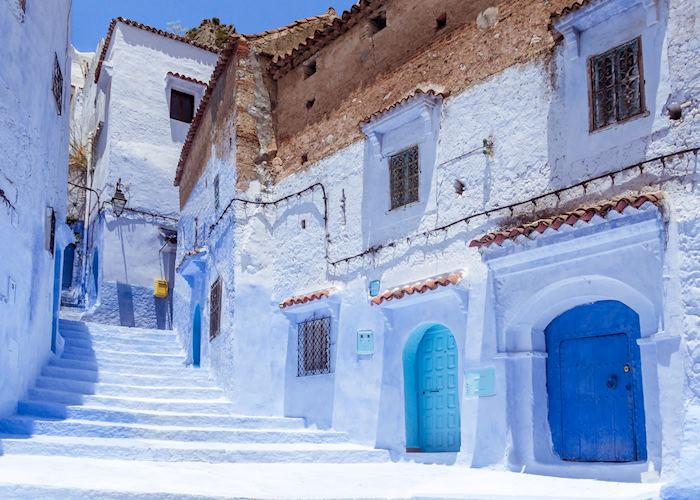A white city standing sentinel at the Strait of Gibraltar, Tangier has a long history as a cosmopolitan trading place and strategic choke point between the Mediterranean and the Atlantic. Founded by the Phoenicians 3,000 years ago, it has long been squabbled over by empires, from the Romans and Byzantines to the Imperial Portuguese and fascist Spain.
During the early part of the 20th century, it was poorly governed by an international committee. Their neglect made the city a haven for vice, decadence and sensation-seeking American expats, not to mention rampant espionage during World War II.
Writers like Kerouac, Burroughs, Ginsberg, Tennessee Williams and Paul Bowles haunted Tangier’s cafés and hotels, while wealthy sensualists like Woolworth heiress Barbara Hutton built hedonistic pleasure palaces. But, by the 1970s the city had fallen into squalid disrepair.
Today, Tangier’s rakish past still gives it a cultural cachet, but contemporary renovations have turned it into a clean and bustling destination, while preserving its café culture and uninhibited (if mostly sober) nightlife.
 The Grand Socco has long been the busy, noisy heart of the city. The cobblestone oval was once crammed with merchants — ‘socco’ means souq — but today just a few stalls and sellers remain. Instead, it acts as the literal gateway between the newer and old city — the arabesque arch at one end, the Bab el Fahs, is the entrance through the medieval wall to the historic medina. Locals and visitors alike come to sit at the cafés that line the plaza and admire the view of the ocean.
The Grand Socco has long been the busy, noisy heart of the city. The cobblestone oval was once crammed with merchants — ‘socco’ means souq — but today just a few stalls and sellers remain. Instead, it acts as the literal gateway between the newer and old city — the arabesque arch at one end, the Bab el Fahs, is the entrance through the medieval wall to the historic medina. Locals and visitors alike come to sit at the cafés that line the plaza and admire the view of the ocean.
The medina itself is clean and well lit, thanks to a facelift, though you can still find traditional shops on its maze of tiny streets, alongside sprawling tourist emporiums and thoroughly modern designer boutiques. The architecture is a jumble of Islamic, Amazigh and Art Deco that dates back to Tangier’s raffish heyday.
In the heart of the old quarter, the Petit Socco is lined with cafés where authors and beat poets wrote, drank and indulged in a variety of questionable stimulants. Today, you can sip the ubiquitous Moroccan mint tea at small tables in the street, admiring the crowds as they wander by.
A 20-minute taxi ride from the city takes you to the Grottes d’Hercule (Caves of Hercules). According to legend, this may have been where the mythological hero lived, or perhaps merely napped between his celebrated labors. Regardless, he’s strongly associated with the grottoes, and the circular indentations on the cave walls are said to be the marks of his fingers (they are, in fact, remnants of generations of millstones being mined from the cave). One of the two entrances to the caves is shaped like an outline of Africa, framing a view of the Atlantic Ocean beyond.
Best time to visit Tangier
April and October are probably the best times to visit Tangier, though you can also enjoy the months of March and May or September and November. We suggest avoiding a trip during the city’s winter months, especially December, when the whole country is crowded, expensive and suffers through miserable weather. Be aware that summer travel — June to August — means dealing with extreme heat. Also, when booking, keep in mind that Ramadan may affect your travel.
who's been there
-
617-223-4521617-223-4750
- Make an inquiry
Places near Tangier
- Asilah 25 miles away
- Chefchaouen 53 miles away
- Fez 128 miles away
- Meknes & Volubilis 132 miles away
- Rabat 135 miles away
- Casablanca 183 miles away










